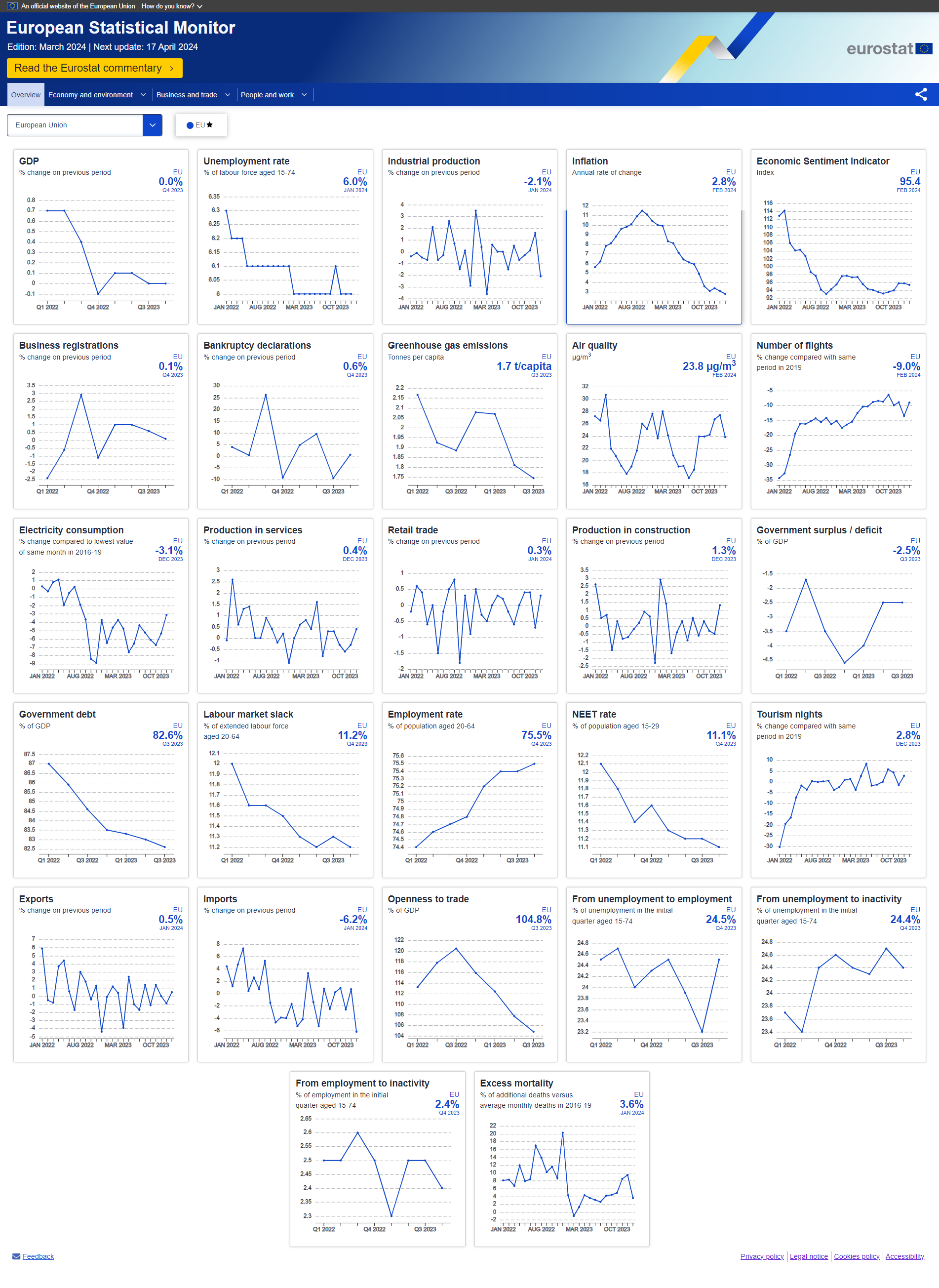Release of the European Statistical Monitor

Today, Eurostat released the European Statistical Monitor, a dashboard with short-term indicators covering different areas, such as economy, environment, business, health and work.
This dashboard is designed to track developments within the EU as a whole and its members, as well as the EFTA countries, providing a holistic overview of key developments. It focuses on monthly and quarterly indicators, ensuring up-to-date insights.
The European Statistical Monitor is updated monthly, together with a commentary focusing on recent changes and trends.
This dashboard has evolved from the European Statistical Recovery Dashboard, which was tracking progress during the COVID-19 recovery period.
A new interface makes it easy to compare trends and developments across different countries and periods.
March highlights: EU industrial production declines, continuing its downward trend, amidst falling inflation and historically low unemployment
EU retail trade rebounded in January 2024, while industrial production declined, following stable GDP in Q4 2023. Additionally, production in services bounced back in December 2023. The lack of growth in GDP for two consecutive quarters, after modest gains in the first two quarters of 2023, indicates that the EU economy is on a weak footing. At the sectoral level, industrial production was marked by ongoing monthly fluctuations, with January falling below the 2021 level, indicating a sustained downward trend. Meanwhile, the rebound in retail trade in January occurred during prolonged fluctuations hovering below its 2021 level, largely due to high inflation negatively impacting consumer spending. On the other hand, the upturn in services production in December 2023 continued observed volatility that began in mid-2023, however remaining significantly above the 2021 level.
Against this backdrop, the EU annual inflation rate fell further in February 2024 to its lowest level since July 2021, primarily due to falling energy prices.
Furthermore, the EU unemployment rate remained at historically low levels in January 2024. This resilient picture of EU unemployment is supported by other labour market indicators, with EU labour market slack decreasing and employment increasing quarter-on-quarter in Q4 2023.
However, EU economic sentiment weakened slightly in February 2024, contrasting with its stability in January and the gradual improvements observed in the preceding months.
You can read the full analysis by opening the Eurostat commentary linked in the dashboard’s header.
The European Statistical Monitor is updated every month with the latest available data for each indicator.
For more information
If you have any queries, please visit our contact us page.

